Whitcomb Locomotives in WWII
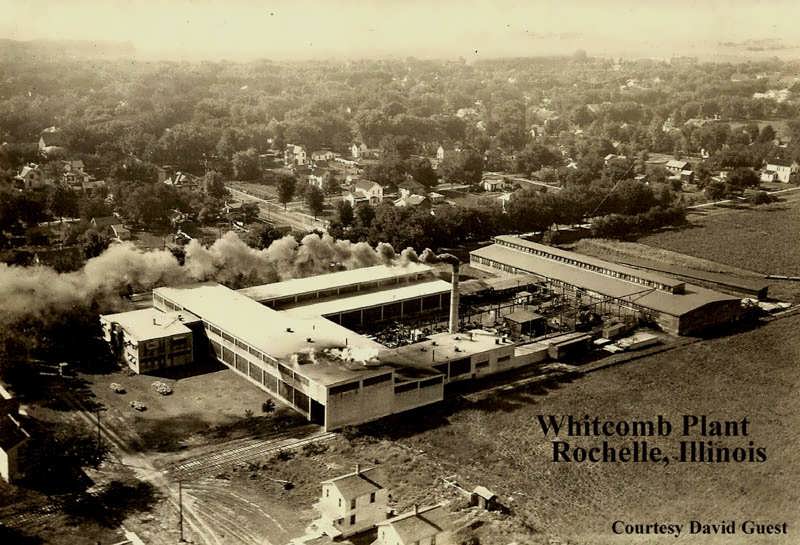
The George D. Whitcomb Company built road switch locomotives during World War II. Road switch engines were designed to handle rail cars on sidings as
well as pull trains over long distances.
They were required to operate easily in both directions with good visibility. During the war, the company manufactured locomotives for the US Army, US Navy and the United Kingdom.
The locomotives were symmetrically designed with the operator's cab in the center. (Photo courtesy of Dave Guest.)
From the The Rochelle Leader
May 4, 1945
"Whitcomb Diesel locomotives built here in Rochelle have played an important part in this war on almost every front. Being smokeless and easy to camouflage against air attacks these locomotives have been extensively used where standard coal burning locomotives proved impractical.
In our January 12th 1945, issue of the Leader we printed an interview with W.F. Eckert, chief engineer at Whitcomb in which he told how Whitcomb built locomotives had solved the English and American transportation problem in North Africa, German bombers had blasted most of the regular locomotives as their smoke was easily spotted by the fliers.
Rochelle Whitcomb diesel locomotives were then camouflaged as regular box cars. In the make up of trains the location of the “ box-car-locomotive” was constantly changed to elude the Germans in their bombing attacks.
The plan proved very successful, and it has been credited as one of the major forces in the British success in the drive from Egypt to Tunisia during the latter four months of 1942 and early 1943.”
From the The Rochelle News
January 26, 1944
“During the latter part of 1940 we were asked to design a locomotive which could operate successfully through desert sand storms and keep cool with the
thermometer registering 125 F. in the shade. The only other known factors, besides the gauge of track was that they needed all the power we could give
them but the weight had to be reduced to the absolute minimum. That is just about as contradictory as wanting the strength of a draft horse in a Shetland
pony. As the boys in the engineering department were only working about 60 hours a week at that time, they decided there wasn't any particular reason why
we couldn't tackle the problem. By actual count there are 10,756 different items necessary to build that Diesel electric locomotive, and the fact it
is still in production offers conclusive proof that the engineers did their work well. Incidentally, in that count the Buda diesels, Westinghouse Electric Equipment,
the Young Radiators and all other materials purchased in a finished state are merely figured as individual items. The balance had to be designed, detailed, weights estimated,
purchased, machined, fabricated, assembled, crated and the completed product sent on its way. We received the actual contract shortly before Christmas and the first units were
operating in Egypt the following May. That is less than half the normal time required on a completely new design. Certainly there isn't much I could say to further
emphasizes the splendid spirit of cooperation which not only exists within the Whitcomb organization but also extends out among all of our suppliers.
They have done a grand job and all of us know it.”
H. G. Heulguard
Vice President, General Manager
Whitcomb Locomotive Company

Shown above is the military specification for the Whitcomb 65-DE-14. The model number explanation is as follows (Weight in tons -DE (diesel electric), DM (diesel mechanical),- version number). Nominal weight
was approximately 65 tons without armor and 68 tons with armor. The US Army typically modified civilian versions of
equipment by adding armor, military lights, etc. The wheel arrangement (Whyte notation) was 0-4-4-0: no support wheels in the front, 2 sets of 4 drive
wheels and no support wheels in the rear. The Navy, on the other hand, purchased existing equipment without modification since it would typically be used on a Navy base in an
environment where combat was not anticipated. (Photo courtesy of Steve O'Connor.)
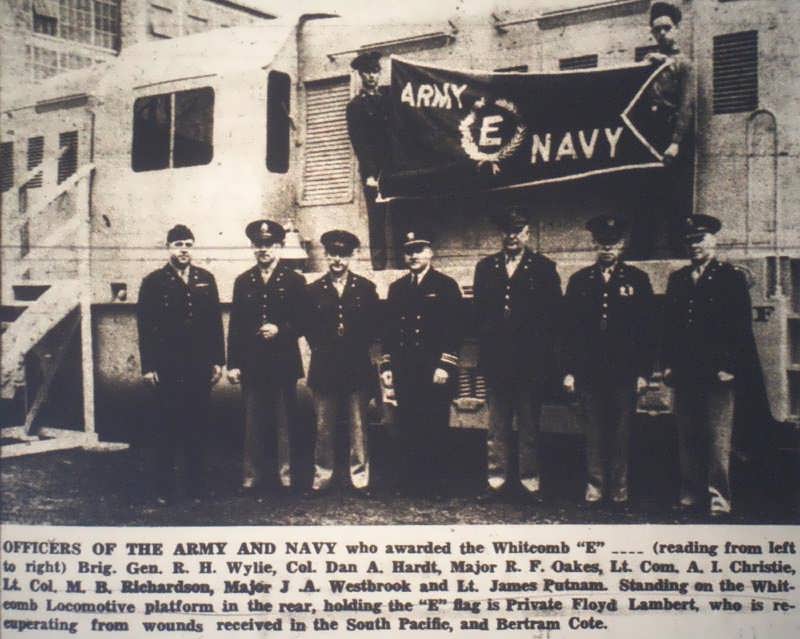
Shown above is a photo from the Rochelle Leader reporting on the Army-Navy "E" award received on December 31, 1944.
The "E" award was given to companies for excellence in the manufacture of war related equipment. The officers in the photo were from the Military Railway Service.
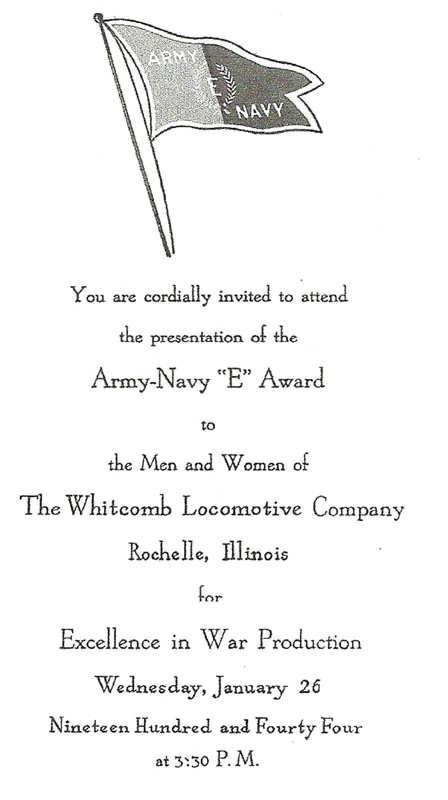
This is the invitation to the "E" award ceremony which was held on January 26, 1944. (Photo courtesy of the Flagg Township Museum)
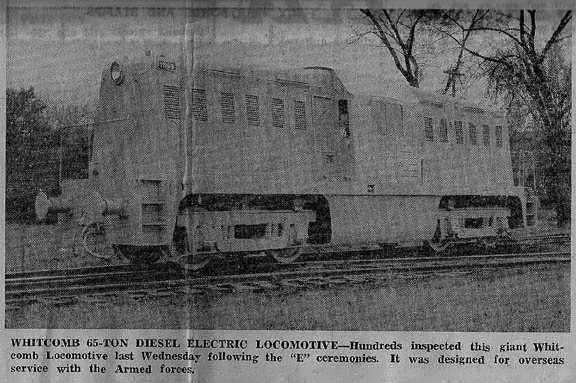
Photo from the Rochelle Leader depicting the locomotive viewed at the "E" ceremony, a 65-DE-14.

Whitcomb 65-DE-14 in service in Italy. (Photo courtesy of the Army Transportation Museum.)
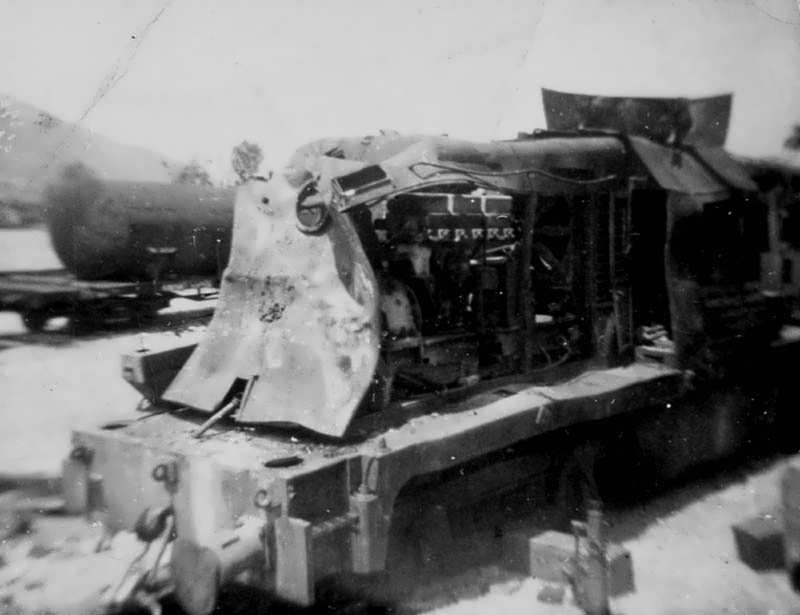
The photo above appears to be war related damage to a Whitcomb locomotive, possibly a result of a bomb or artillery attack but most likely a result of a collision. (Photo courtesy of Steve O'Connor.)
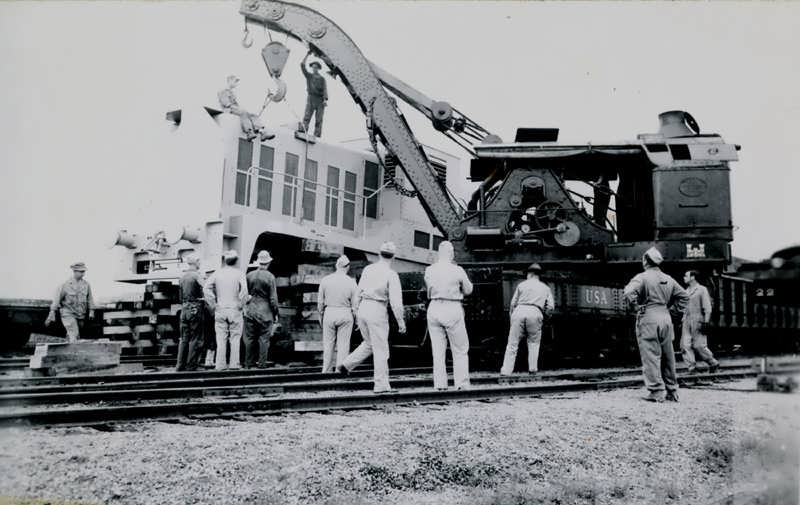
Assembly of a Whitcomb locomotive with US Army quality control inspectors observing. Note armor added to protect radiator and other components from projectiles. (Photo
courtesy of the Army Transportation Museum.)

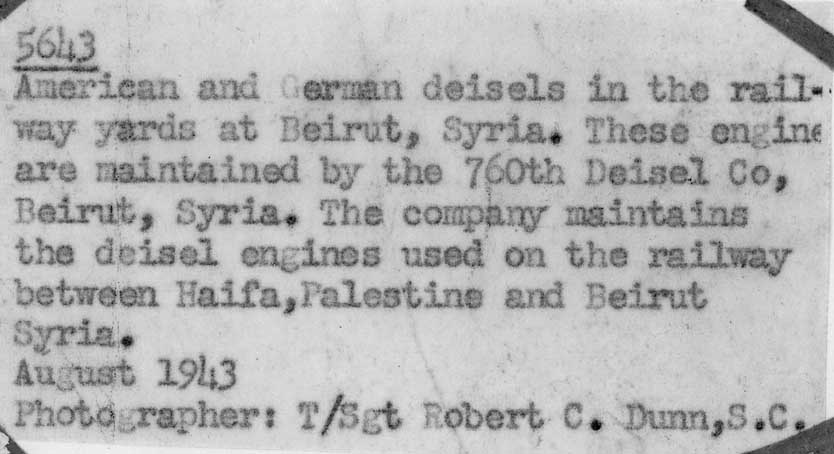
Signal Corps Photo of Whitcomb 65-DE-14 with caption taped to the back. (Photo courtesy of Steve O'Connor.)

Whitcomb locomotive in Oahu. (Photo courtesy Hawaiian Railway Society Collection.)
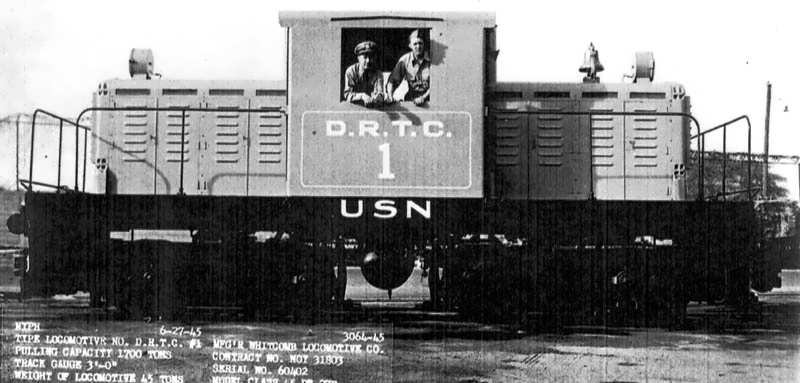
Whitcomb 45-DE-27 in service with the US Navy at end of war. (Photo courtesy Hawaiian Railway Society Collection.)

Whitcomb 40-DE in service with the US Navy in Oahu. (Photo Courtesy Hawaiian Railway Society Collection.)
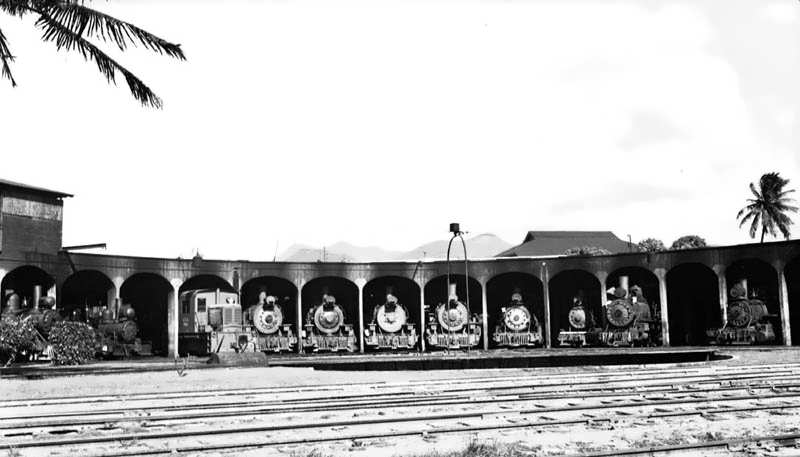
Army Whitcomb locomotive in round house. The Army Whitcomb is No. 7504 and was taken in 1943. (Courtesy Fred Stindt Collection, Hawaiian Railway Society Collection.)

Whitcomb 90-GE civilian version, pre war. (Photo courtesy of Tom Westin.)
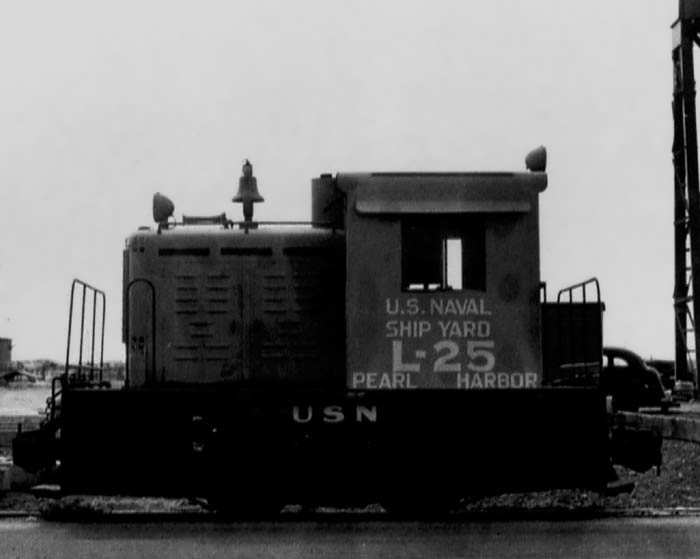
Whitcomb 25-DE in service with the US Navy. (Photo courtesy Hawaiian Railway Society Collection.)

Small Whitcomb DM switching locomotive. (Photo courtesy of Tom Westin.)

Rochelle Leader, May 1945.
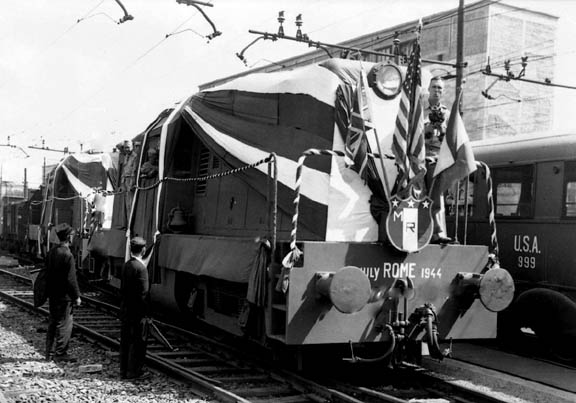
First train into Rome, July 1944

Brig. Gen. Carl R. Gray, Director Gen. of Allied Military Railroad Division shakes hands with Col. Charles Poletti,
A.M.G. Commissioner on arrival of first train at Rome since Allied occupation. July 4, 1944
Copyright 1995 Charles C. Roberts, Jr





















 BACK TO ROBERTS ARMORY HOME PAGE
BACK TO ROBERTS ARMORY HOME PAGE